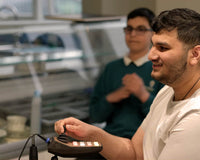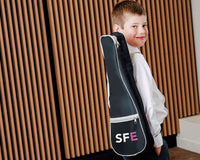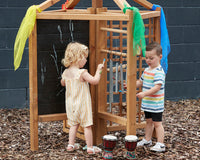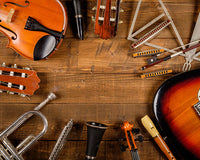Acoustic pianos have been one of the most popular instruments for centuries, however, in recent years, the technology of digital pianos and keyboards has blossomed and some of the new features can seem a little confusing. We explain the most common terms and difference between the electric pianos/keyboards and hope this will guide you through selecting your own digital piano or a keyboard or let you fully experiment with the world of options your instrument can provide.
Digital Pianos – designed to replicate the note action, octave range and sound of an acoustic piano. Digital pianos may still include creative features found on keyboards and are usually a great alternative to an acoustic piano for beginners, houses/apartments with limited space, for the mobile musician or pianists who wish to practice silently (with headphones).
Keyboards are mainly used in more contemporary music (such as pop) and although have the main features of a piano (black and white keys, sound) usually feature more creative features, for example, different voices. The keys can be smaller and there can be fewer octaves on the keyboard.
Keyboard and Digital Piano Terms
Fully weighted, hammer action/graded keyboard – this means that the keyboard on your digital piano will feature a similar action and response as that of an acoustic piano. The keys are designed to be equally heavy.
Progressive Damper action – pedal function, that offers different levels of damping, depending on how heavy the pedal is pressed.
Sound Engine – the means digital pianos use to produce the sound. It consists of sound samples, usually taken from an acoustic piano to recreate the natural sound.
Velocity Layers/Touch Sensitive keys – an extension of the sound engine. The sound samples are recorded from playing each note of a piano at different dynamics. The digital piano/keyboard then sounds softer when played quietly and much louder and brighter when played with force.
Voices – different sounds on a digital piano/keyboard.
Accompaniment styles – popular feature on electronic keyboards. This refers to a number of different drum beats and accompaniments to complete and support your performance.
Key Split – allows you to play a certain sound on the lower half of the keyboard and a different sound on the higher half.
Dual Mode/Layer – this will put one sound on top of another, for example piano on top of strings.
Polyphony – this stands for a number of notes your digital piano/keyboard can play at the same time. If this number of keys is exceeded, the piano will ‘steal’ or mute the notes that have gone over the limit.
1,2,3 etc Track Recording – this refers to a number of tracks you can record on your piano. For example, you can record a drum track on 1 channel and improvise it on 2nd channel. The more tracks the keyboard allows you to layer on top of each other, the more complex pieces you can record.
MIDI or USB – connecting ports for use with a computer, other MIDI keyboards or other compatible technology. This allows you to connect your keyboard/piano to a computer to sample the sounds and use with other software.
Transpose – this function allows you to alter the pitch of the notes. You would still be playing the music as it was originally written, however, the produced key will be as higher or lower as you set it.
Full Sized and Organ Keys – full sized keys are the same width and size as those of a piano. Some keyboards will have organ keys which will be slightly smaller.
Pedals – there are two standard pedals on a piano – una corda and sustain. Una corda – is the pedal on the left and is played with left foot. Una corda (also called ‘soft pedal’) is used to enhance the lower volume and the more tender sound of softly played notes. Sustain – also called ‘damper’ pedal allows all of the notes on the piano to resonate even you have stopped pressing the keys. This forces notes to echo and overlap in order to create the ‘legato’ effect. Sostenuto – this was the last addition to a contemporary piano. Sostenuto pedal allows for certain notes to be sustained, similar to sustain pedal. To achieve this, the pianist plays the desired notes and then depresses the pedal. Those notes will then resonate until the player lifts the pedal.




















